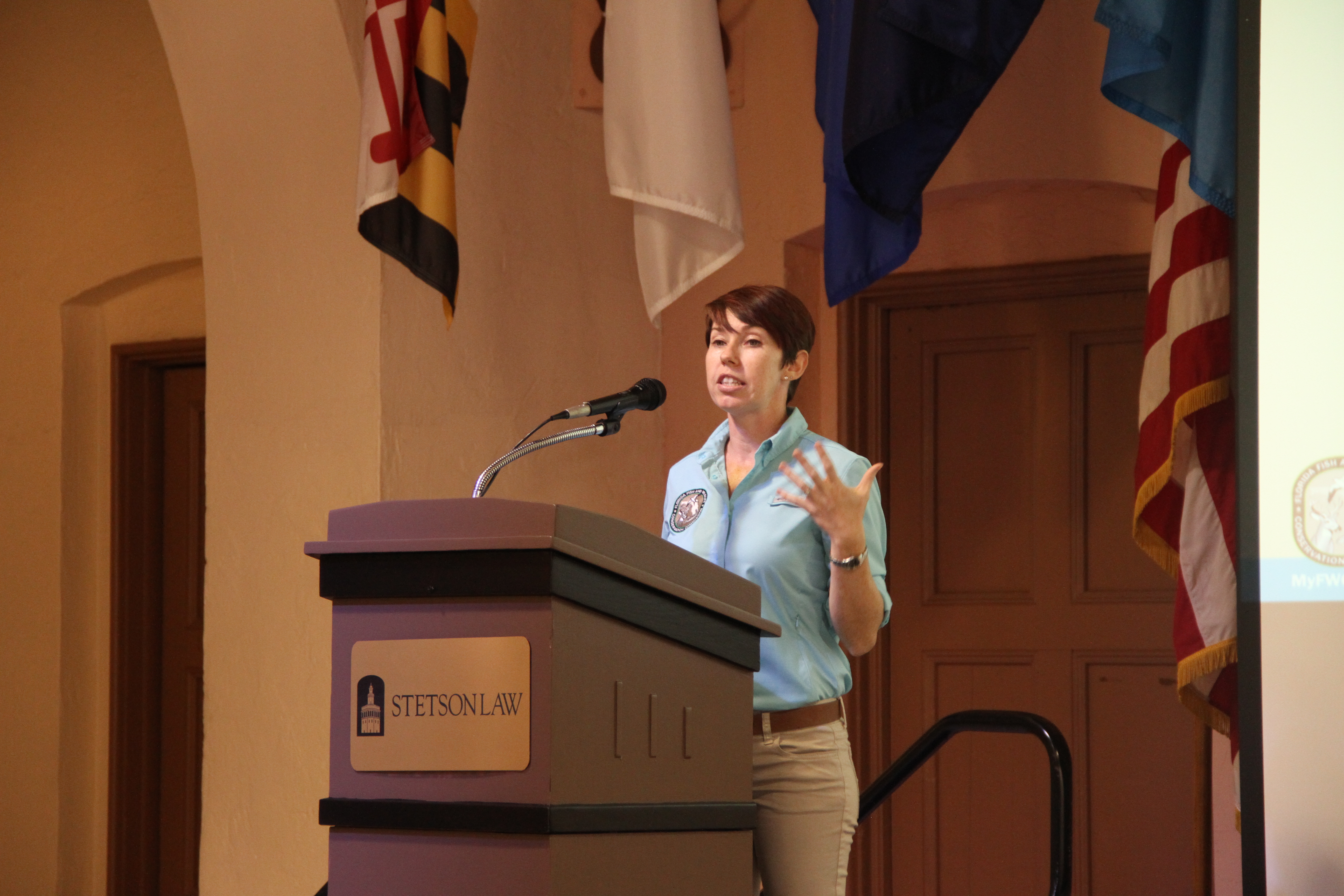Fish and wildlife biologist Tonya Long presents the Foreman Biodiversity Lecture at Stetson Law
Tonya Long, biologist with the Florida Fish and Wildlife Conservation Commission, presented the Oct. 23 Foreman Biodiversity Lecture on “The Dark Side: Improving Sea Turtle Nesting Beaches Through Comprehensive Light Management.”
Long discussed how to reduce the impact of artificial lighting on nesting and hatchling sea turtles.
“Florida is a globally important nesting beach,” said Long. Five species of sea turtles nest in Florida.
Many of the most commonly used types of lighting are problematic to sea turtle nesting and hatching, Long explained. Sea turtle mothers and hatchlings can become disoriented by beachfront lighting, and hatchlings drawn to artificial lights on the beach can become dehydrated, exhausted and fall victim to predators, Long said.
Long, a fish and wildlife biologist, works with properties, local governments and the public to maintain wildlife-friendly beaches with healthy lighting. Long’s beachfront lighting model includes low, shielded lighting in long wavelengths using amber, orange or red.
“It takes partnerships,” Long said, illustrating the importance of developing a wide and diverse network of partnerships to impact change.
More information about the Florida Fish and Wildlife Commission’s work with sea turtles is available at www.myfwc.com/seaturtle.
Stetson’s Foreman Biodiversity Lecture series is coordinated through the Institute for Biodiversity Law and Policy, which is the recipient of the 2016 American Bar Association’s Distinguished Achievement Award in Environmental Law and Policy. All lectures in the series are complimentary and open to the public.
To learn more about environmental law programming and the Institute at Stetson, visit www.stetson.edu/law/biodiversity.
Post date: Oct. 23, 2017
Media contact: Kate Bradshaw
[email protected] | 727-430-1580
